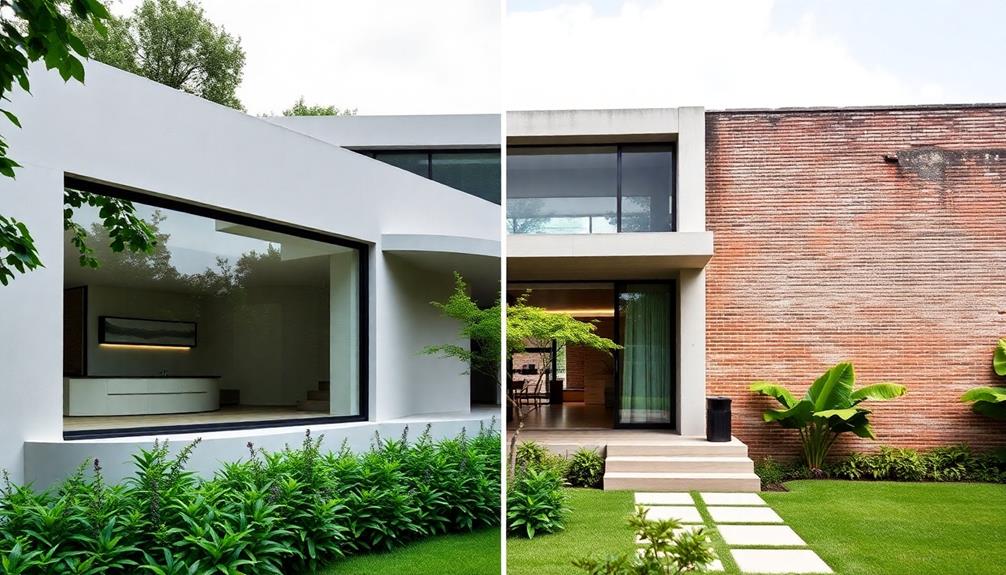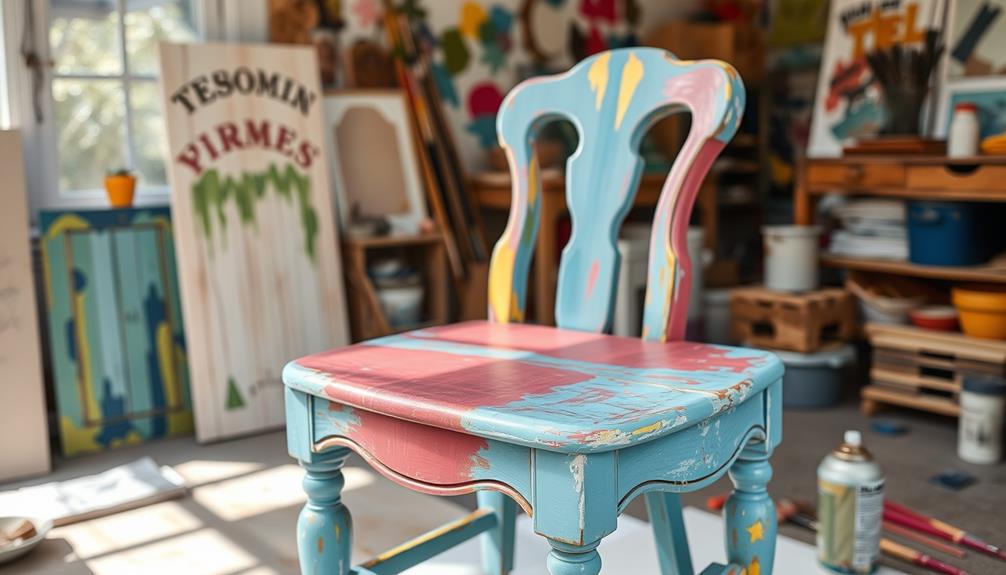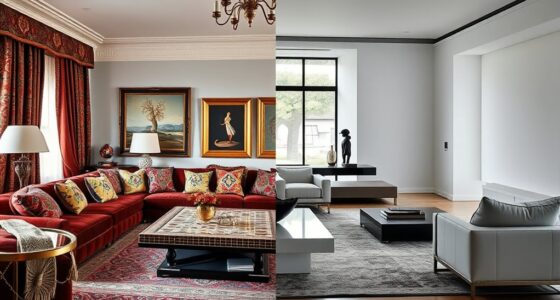Modern homes are ditching brick construction mainly for cost savings and design flexibility. Bricklaying is labor-intensive and expensive, while alternatives like wood and fiber cement are cheaper and quicker to install. Additionally, today's building codes encourage innovation, allowing for eco-friendly materials that reduce environmental impact. Wood is lighter and more adaptable, enhancing structural safety, especially in seismic areas. You'll also find that new materials ease maintenance and protect against water damage. If you're curious about the trends shaping these choices, there's plenty more to discover on this topic.
Key Takeaways
- Modern homes favor cost-effective materials like wood and fiber cement siding, offering lower material and labor expenses than traditional brick.
- Building codes have evolved to allow more flexibility in material choices, promoting innovative and sustainable construction methods.
- Wood and other alternatives provide better moisture resistance, reducing the risk of water damage compared to porous brick.
- The lightweight nature of wood enhances seismic safety, allowing structures to absorb shocks better than rigid brick construction.
- Rapid construction methods, including prefabrication, enable quicker project completion, meeting the demands of the fast-paced housing market.
Cost Considerations
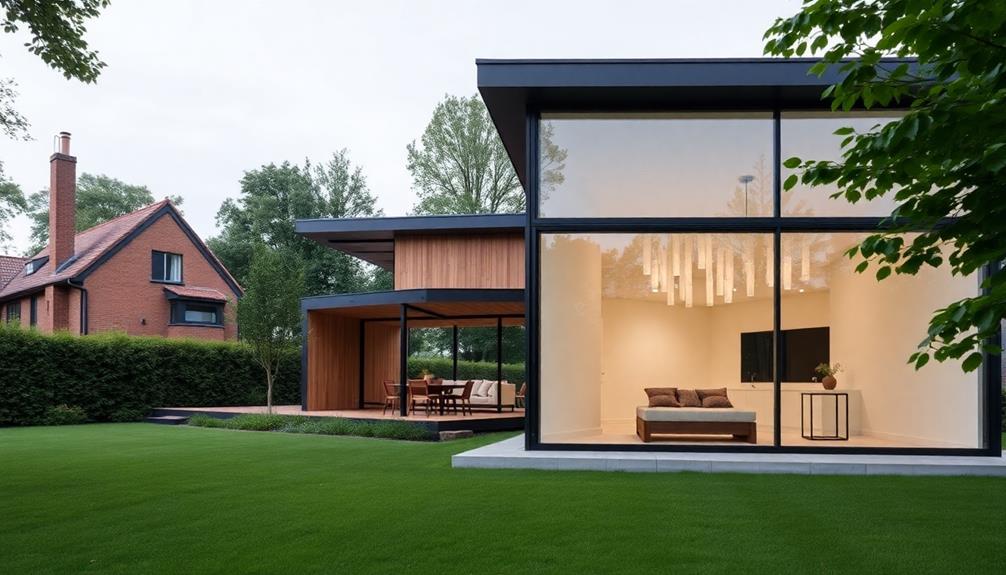
When it comes to building a modern home, cost considerations play a crucial role in your material choices.
You'll find significant cost disparities between traditional brick and alternatives like wood and vinyl siding. Bricklaying is labor-intensive, which increases your overall construction expenses.
In contrast, materials like fiber cement siding offer durability at lower prices and require less specialized labor, cutting costs further.
Wood framing often incurs lower material costs compared to bricks, and its ease of handling reduces labor expenses.
Shorter construction timelines can lead to additional savings, while lower maintenance costs over time contribute to the overall budget.
For budget-conscious builders, the cost-effectiveness of wood and alternative materials makes them particularly appealing choices for modern homes.
Building Code Flexibility
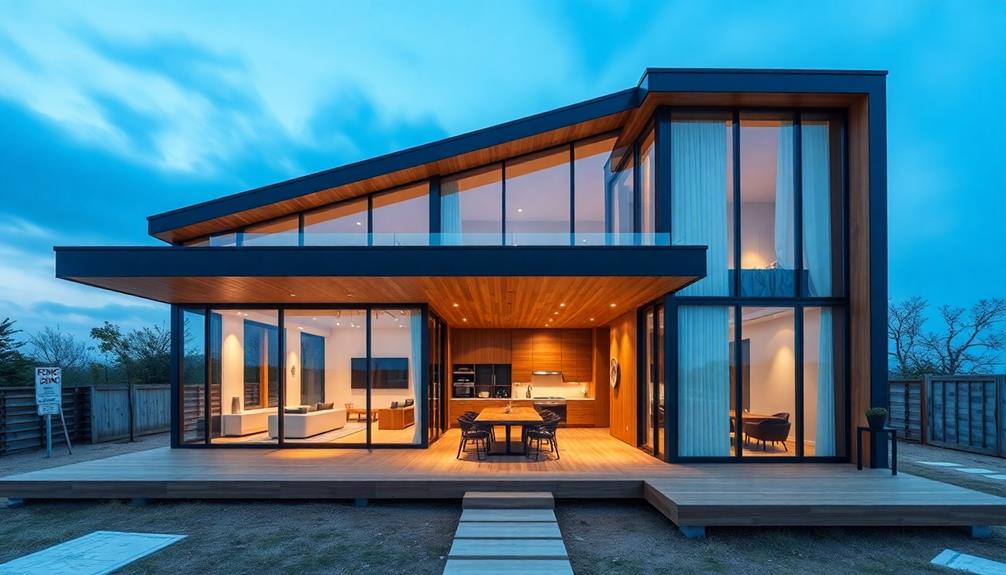
As building codes have evolved since World War II, they now provide greater flexibility in material choices, allowing builders to explore a wider range of options beyond traditional bricks.
This shift means you can choose materials that not only meet safety and structural requirements but also align with contemporary design and budget preferences.
Modern codes no longer mandate the use of bricks, encouraging innovation and creativity in construction.
You'll find that this flexibility promotes the use of cost-effective and sustainable materials, catering to the evolving demands of homeowners.
Additionally, the absence of strict brick requirements allows you to adapt to market trends and consumer expectations, ensuring that your building projects remain relevant and appealing in today's fast-paced housing market.
Environmental Impact
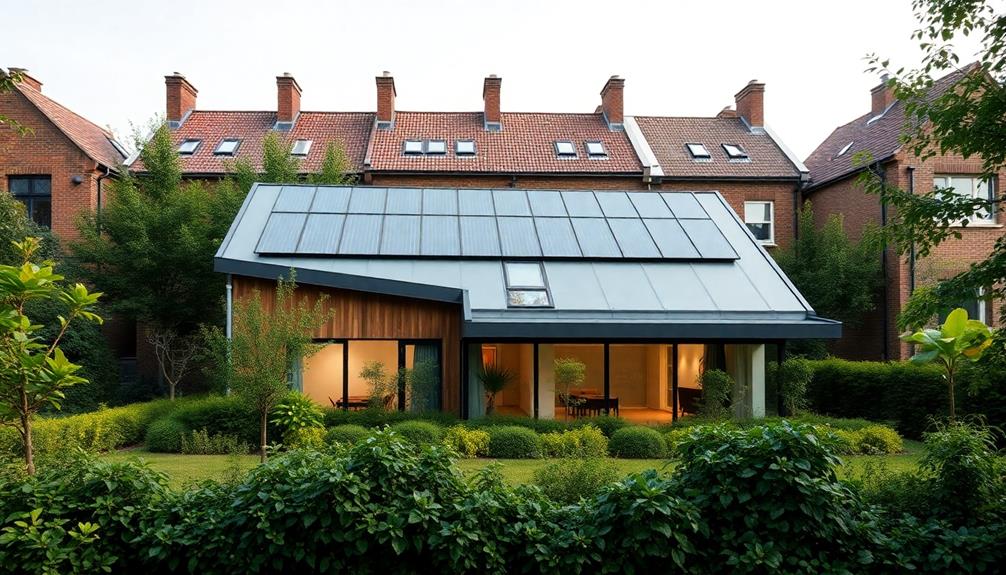
The environmental impact of building materials is a crucial factor in modern construction, especially as sustainability becomes a priority for homeowners.
Traditional brick manufacturing has a significant carbon footprint, while lighter alternatives can reduce emissions during transport.
Here are some key points to contemplate:
- Carbon Footprint: Brick production emits more greenhouse gases than wood or cement.
- Transportation Impact: Heavy bricks require more energy to transport, increasing overall emissions.
- Renewability: Wood is a renewable resource, making it a sustainable choice.
- Eco-Friendly Practices: Sustainable forestry enhances the environmental benefits of using wood.
Water Damage Vulnerability
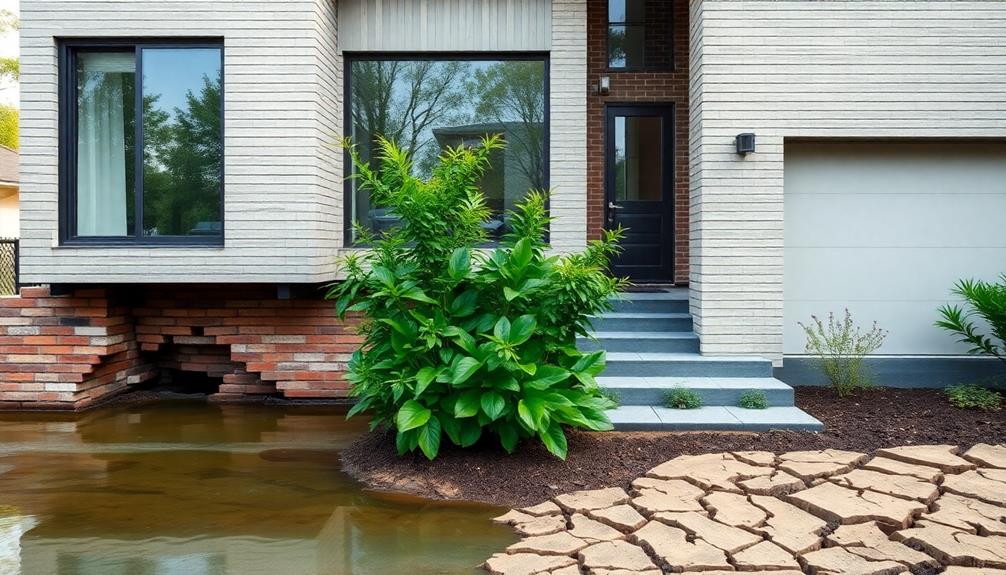
Water damage vulnerability poses significant challenges for building materials, particularly in regions with high moisture levels.
Bricks, while sturdy, are porous and can absorb water, leading to issues like mold growth and structural damage. This absorption can compromise the integrity of your home, creating an expensive and time-consuming headache.
In contrast, modern materials like cement and treated wood offer better moisture resistance, making them appealing alternatives. You'll find that these materials not only help prevent water-related problems but also contribute to a healthier living environment by reducing humidity levels.
Repair and Maintenance Challenges
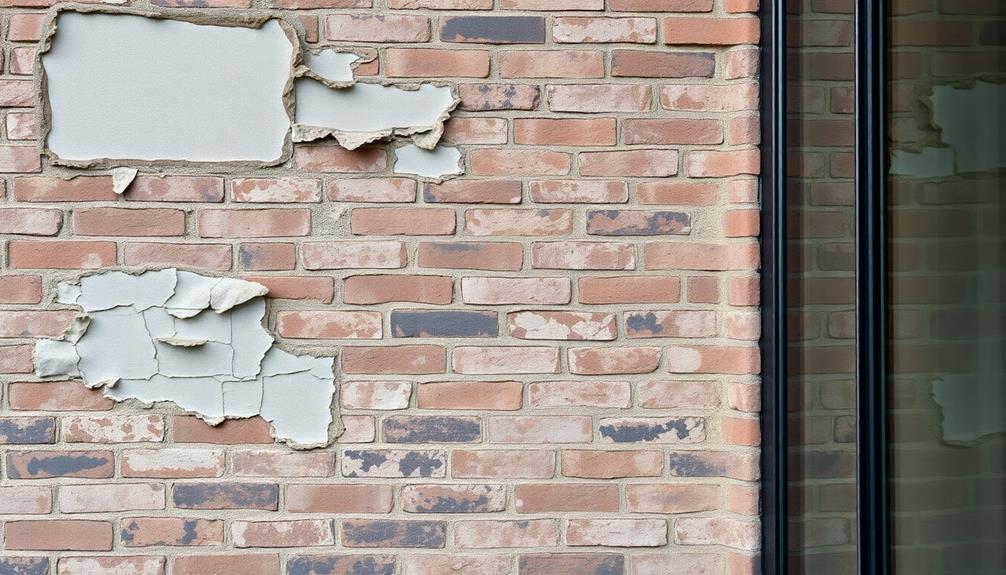
When it comes to maintaining your home, repair challenges with brick walls can quickly become an intimidating task. The complexity of brick installation means that any damage often requires extensive repairs, which can be time-consuming and costly.
Here are some key challenges you might face:
- Labor-Intensive Repairs: Fixing brick walls typically involves skilled labor, increasing costs.
- Complete Wall Removal: You might need to remove entire sections of brick to address issues like cracks or water damage.
- Material Costs: Brick materials can be expensive, adding to your overall repair budget.
- Longer Downtime: Repairs can disrupt your daily life, as the process takes time to complete.
These factors make alternative materials more appealing for modern homeowners focused on ease of maintenance.
Preference for Wood
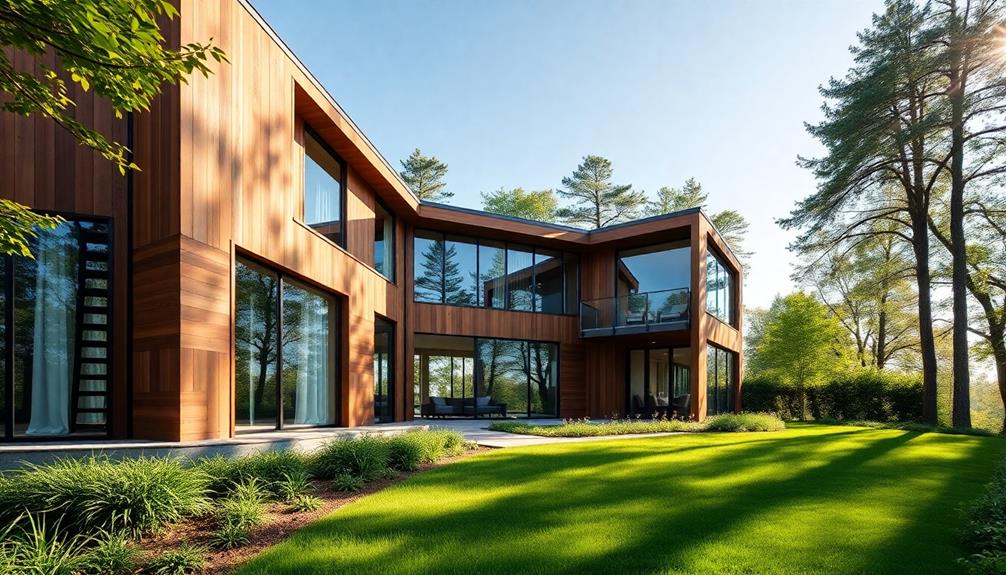
Wood has become a preferred choice for many modern homeowners due to its versatility and practical benefits.
You'll find that wood can accommodate various architectural styles, making it easy to create a unique look for your home. It's also cost-effective, with lower material and labor costs compared to brick.
Additionally, wood frames are easier to modify or expand, allowing you to adapt your home over time. The lightweight nature of wood offers better performance in natural disasters, like earthquakes, enhancing safety.
Moreover, sustainable forestry practices make wood an eco-friendly option, aligning with growing environmental awareness.
Seismic Safety Concerns
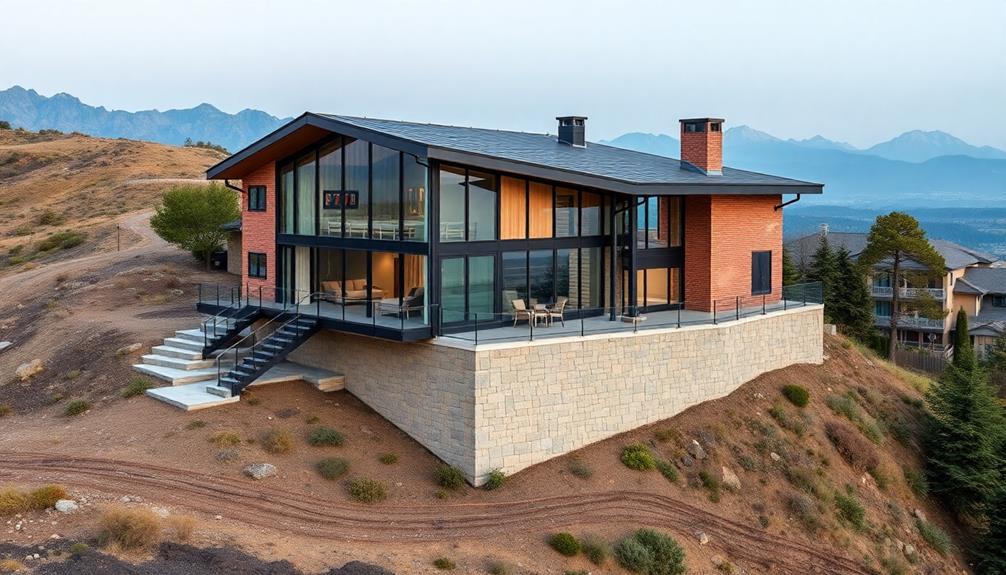
Seismic safety is an essential consideration for homeowners, especially in areas prone to earthquakes. When building or renovating, you should think about materials that can withstand seismic activity.
Here are a few reasons why wood is often preferred over brick in these scenarios:
- Flexibility: Wood's lightweight nature allows structures to absorb seismic shocks better.
- Resilience: Unlike brick, which can crack under pressure, wood can bend and shift without failing.
- Building Codes: Many regulations prioritize materials that enhance safety in seismic zones.
- Cost-Effectiveness: Using wood reduces repair costs after seismic events, as it's easier to fix than brick.
Choosing the right materials can greatly impact your home's safety and longevity in earthquake-prone areas.
Design Trends and Flexibility
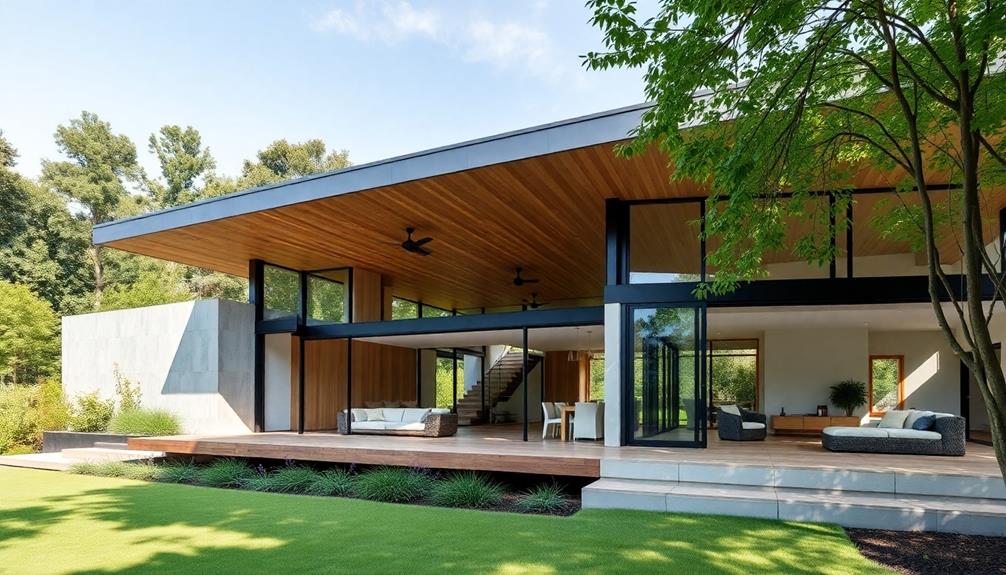
In today's dynamic housing market, design trends are increasingly favoring innovative materials that offer greater flexibility and customization. Homebuyers today prefer unique architectural expressions that cater to their personal tastes. Wood framing stands out, allowing for diverse styles and easier modifications compared to traditional brick structures.
Here's a quick comparison of design flexibility between materials:
| Material Type | Flexibility and Customization |
|---|---|
| Brick | Limited; traditional designs |
| Wood | High; varied styles possible |
Choosing wood not only supports creative solutions but also aligns with modern aesthetics. As homebuyers seek customizable options, the versatility of wood materials drives their popularity, making them a top choice in contemporary construction. In addition, wood’s warmth and natural beauty make it a sought-after option for interior design and furnishings. The unique grain patterns and textures of different wood species offer a wide range of styling possibilities, allowing for a personalized touch in any space. In fact, when it comes to enhancing the look and feel of furniture, the styling cream comparison often ends with wood coming out on top for its ability to be easily shaped and finished to meet individual preferences.
Labor Market Dynamics
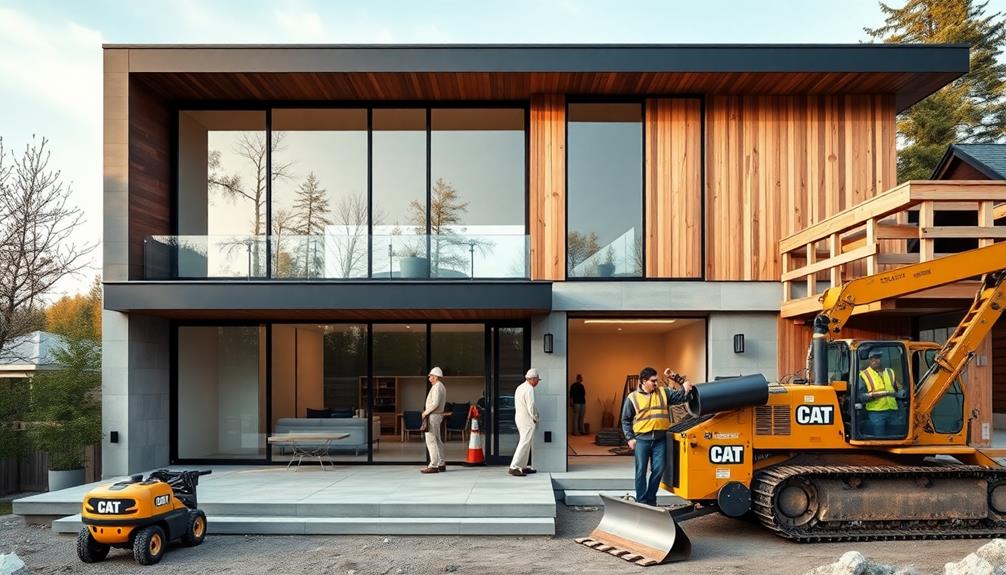
The labor market's evolving dynamics are reshaping construction preferences, particularly as skilled labor for bricklaying becomes scarcer and more expensive.
As builders like you adapt, you'll find that alternative materials are often more accessible and cost-effective. Here are some key insights:
- Labor Shortages: Skilled brick masons are in short supply, driving up costs.
- Simpler Training: Materials like wood require less specialized training, making it easier to find labor.
- Efficiency Focus: Builders prioritize quick installation methods to meet market demands.
- Wider Labor Pool: The simplicity of working with wood attracts a broader range of workers.
These factors push you towards materials that promise both efficiency and affordability in modern construction.
Construction Speed Advantages
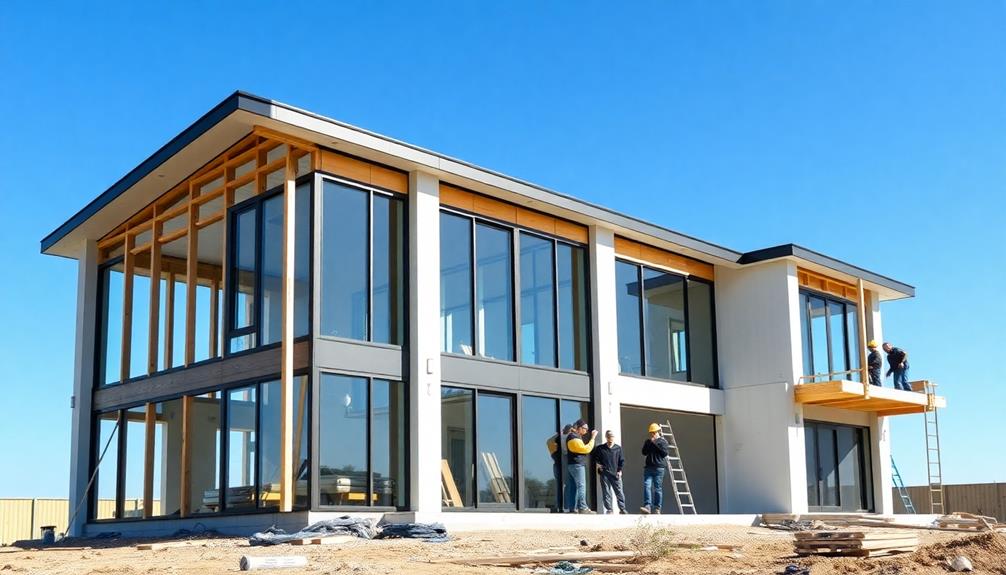
As you adapt to the changing labor market, the urgency for quicker construction timelines becomes increasingly apparent. Builders are now favoring materials and methods that greatly speed up the construction process. With innovations like modular and prefabricated components, you can assemble homes faster than traditional bricklaying allows.
| Method | Speed Advantage | Material Type |
|---|---|---|
| Modular Construction | Quick assembly | Wood |
| Prefabrication | Off-site fabrication | Composite materials |
| Light Gauge Steel | Rapid installation | Steel |
| SIPs (Structural Insulated Panels) | Efficient insulation | Engineered wood |
| Panelized Framing | Reduced labor time | Wood |
Frequently Asked Questions
What Are the Aesthetic Differences Between Brick and Modern Materials?
When comparing brick to modern materials, you'll notice that brick offers a classic, rustic charm, while contemporary options provide a sleek, versatile look. This flexibility allows for unique designs that cater to diverse aesthetic preferences.
How Do Brick and Wood Affect Home Resale Value?
When considering home resale value, wood often appeals more to buyers due to its modern appeal and energy efficiency. Brick might deter some, as preferences shift towards easier maintenance and contemporary designs that wood offers.
Are There Specific Climate Considerations for Using Brick Versus Wood?
Choosing materials for your home is like picking a coat for the weather. In humid climates, wood breathes and resists moisture better, while brick, though sturdy, can absorb water and suffer damage over time.
What Historical Factors Influenced the Popularity of Brick Construction?
Historical factors influencing brick construction's popularity include its durability, fire resistance, and abundance in certain regions. You'll find that cultural significance and traditional craftsmanship also played a role in establishing brick as a favored building material.
How Do Community Preferences Impact Material Choices in Home Construction?
Have you ever wondered how community preferences shape your home's materials? As trends evolve, you'll notice that sustainable options gain favor, reflecting a collective desire for affordable, low-maintenance, and stylish living environments that resonate with today's lifestyles.
Conclusion
As you can see, modern homes are moving away from traditional brick construction for a host of practical reasons. With cost savings, design flexibility, and environmental considerations in mind, it's clear that innovation is reshaping the way we build. As the old saying goes, "time is money," and today's builders are finding that quicker, more efficient methods lead to better homes. Embracing these changes not only meets market demands but also paves the way for a sustainable future.
